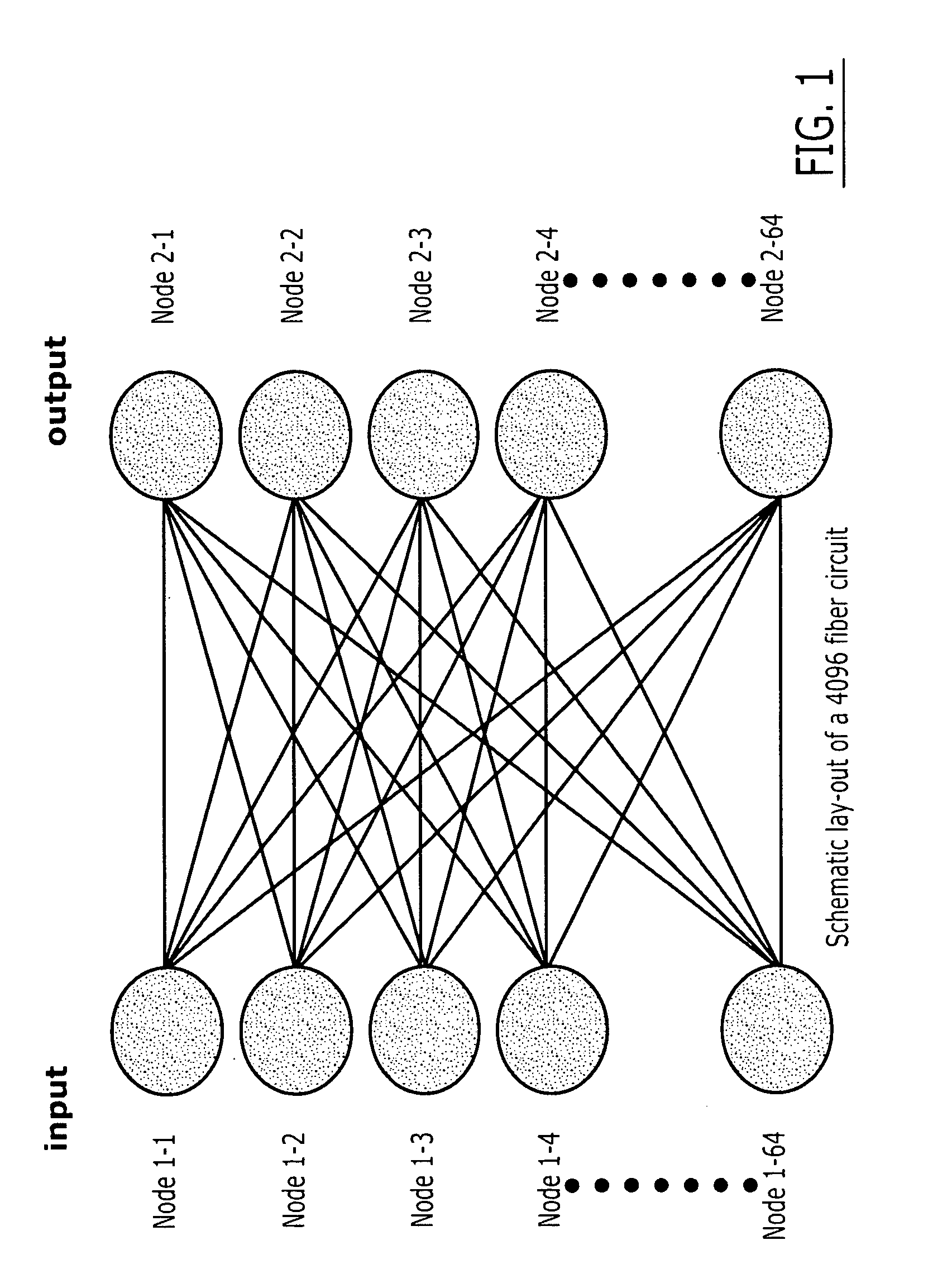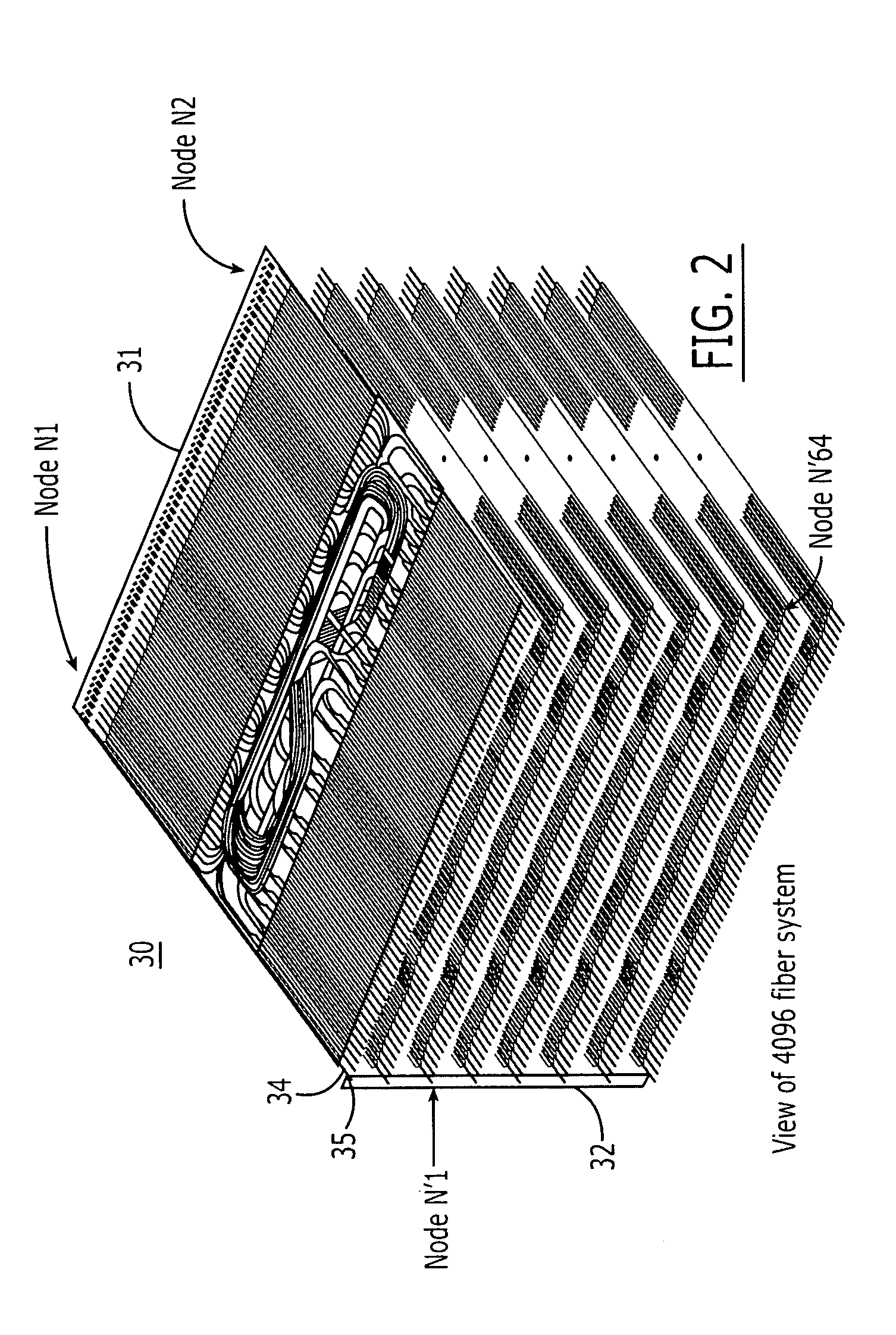Optical cross connect
a cross-connecting and optical technology, applied in the field of optical cross-connecting, can solve the problems of compromising the efficiency of the overall system, high energy input signal, large and expensive optical cross-connecting, etc., and achieves the effects of reducing the number of nodes
- Summary
- Abstract
- Description
- Claims
- Application Information
AI Technical Summary
Benefits of technology
Problems solved by technology
Method used
Image
Examples
Embodiment Construction
[0024]Referring to FIGS. 3 through 9, a preferred embodiment of the optical cross connect of the present invention and its components are shown. FIG. 3 shows a preferred embodiment of a 64×64 node, 4,096 fiber perfect shuffle. Although the depicted system comprises 64×64 nodes, it should be understood that the present invention is not limited to a particular cross-connect configuration. Indeed, the configurability of the optical cross-connect is an important feature of the invention. The optical cross-connect can be figured to meet any desired node interconnection, for example, 8×8, 16×16, 32×32 and as shown 64×64, as discussed below.
[0025]As shown in FIG. 3, the optical cross-connect system 30 comprises a three-dimensional array of interconnected fibers 31. The fibers are arranged so that their ends are presented essentially on two different faces, 32, 33, of the three-dimensional array. It should be understood that the term “face,” as used herein, is not intended to imply that all...
PUM
 Login to View More
Login to View More Abstract
Description
Claims
Application Information
 Login to View More
Login to View More - R&D
- Intellectual Property
- Life Sciences
- Materials
- Tech Scout
- Unparalleled Data Quality
- Higher Quality Content
- 60% Fewer Hallucinations
Browse by: Latest US Patents, China's latest patents, Technical Efficacy Thesaurus, Application Domain, Technology Topic, Popular Technical Reports.
© 2025 PatSnap. All rights reserved.Legal|Privacy policy|Modern Slavery Act Transparency Statement|Sitemap|About US| Contact US: help@patsnap.com



